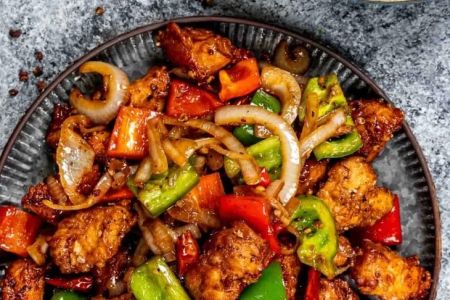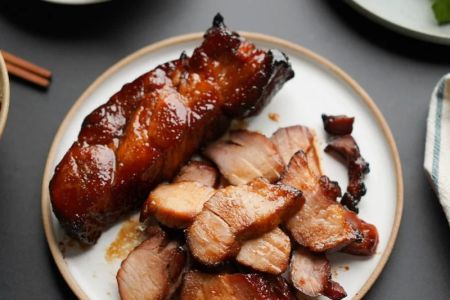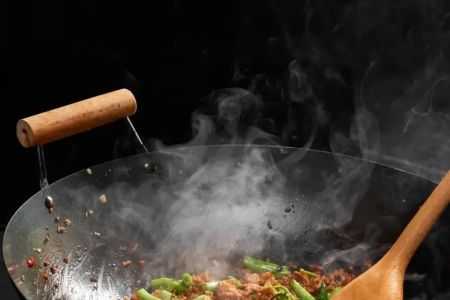- 1-Understanding-Chinese-Food-Allergen-Free-Options-in-the-USA
- 2-Common-Allergens-in-Chinese-Cuisine-and-How-to-Avoid-Them
- 3-Finding-Safe-Dishes-at-Chinese-Restaurants
- 4-Preparing-Allergen-Free-Chinese-Food-at-Home
- 5-Real-Life-Experience-and-Case-Study-on-Allergen-Free-Chinese-Food
- 6-Reliable-Resources-and-Recommendations-for-Allergen-Free-Chinese-Food
1. Understanding Chinese Food Allergen-Free Options in the USA
Chinese cuisine is beloved across the United States for its rich flavors and diverse dishes. However, for those with food allergies, navigating the menu can be challenging. Fortunately, allergen-free options within Chinese food are increasingly available in the USA as awareness of food allergies grows. Understanding what these options entail is the first step toward enjoying Chinese food safely.
The diversity of Chinese cuisine means that there are naturally occurring allergen-free dishes as well as those that can be modified to suit dietary restrictions. Popular allergens like peanuts, soy, shellfish, gluten, and sesame are often used in traditional recipes, so identifying safe alternatives or adjustments is crucial. Many restaurants now offer allergen menus or are willing to accommodate special requests to reduce the risk of allergic reactions.
As food allergies affect nearly 32 million Americans, including children and adults, demand for safe dining experiences has surged. This cultural shift has prompted many Chinese restaurants to adapt by highlighting allergen-free options or creating new dishes tailored for sensitive customers. However, caution and preparation remain key, especially when dining out.
2. Common Allergens in Chinese Cuisine and How to Avoid Them
To effectively find or request allergen-free Chinese food, it is important to know which ingredients commonly trigger allergic reactions. Soy sauce, a staple in many Chinese dishes, contains gluten and soy, both common allergens. Peanuts and tree nuts are frequently used in sauces, garnishes, and stir-fries. Shellfish like shrimp and crab also appear regularly in popular dishes.
Beyond the obvious allergens, sesame seeds and oils can be hidden sources of allergens. MSG, while not an allergen, can cause sensitivities for some individuals. Additionally, wheat used in dumplings, noodles, and battered items presents a challenge for gluten-intolerant diners.
Avoiding these allergens requires vigilance. One approach is to focus on dishes naturally free from these ingredients, such as steamed vegetables, plain rice, or certain meat dishes cooked without soy or nuts. Many restaurants in the USA now use gluten-free soy sauce alternatives or can prepare dishes without nuts if requested.
3. Finding Safe Dishes at Chinese Restaurants
When dining out, communication with restaurant staff is paramount. Many Chinese restaurants in the USA are increasingly trained to handle allergen-free requests, but this varies by location and management. Informing your server about specific allergies and asking for ingredient details helps prevent cross-contamination and exposure.
Some dishes typically safer for allergen-sensitive customers include steamed rice, plain steamed or stir-fried vegetables, chicken or beef prepared without soy sauce or nuts, and soups made without shellfish or gluten-containing ingredients. It is wise to avoid fried dishes unless the oil and batter ingredients are clearly understood.
There are also regional variations in Chinese cuisine that can influence allergen exposure. For example, Cantonese cuisine tends to use seafood and soy heavily, while Sichuan dishes often contain peanuts and sesame oil. Knowing these nuances can guide safer choices.
4. Preparing Allergen-Free Chinese Food at Home
Many with food allergies choose to prepare Chinese dishes at home to control ingredients and reduce risks. The good news is that many classic dishes can be easily adapted with allergen-free alternatives. Using tamari or coconut aminos instead of soy sauce, substituting rice noodles for wheat-based noodles, and cooking with fresh vegetables and proteins free of allergens can recreate the flavors safely.
Recipes for allergen-free versions of fried rice, stir-fries, and soups are widely available and can be customized to taste. Home cooking also allows experimenting with spices and flavors traditional to Chinese cuisine while avoiding hidden allergens.
Those new to allergen-free Chinese cooking may find value in meal kits or ingredient bundles designed for allergy-friendly meals. For more tailored recommendations on products and stores that specialize in allergen-free Chinese ingredients, visiting a trusted platform like Chinese Food can provide curated suggestions.
5. Real-Life Experience and Case Study on Allergen-Free Chinese Food
Consider the experience of Laura, a mother in Chicago whose son has a severe peanut allergy. Finding safe Chinese food used to be daunting until she connected with local restaurants willing to customize meals and avoid cross-contact risks. She shared how clear communication and educating staff transformed their dining outings from stressful to enjoyable.
Laura also developed her own allergen-free Chinese recipes at home, inspired by traditional flavors but carefully avoiding peanuts, soy, and gluten. Her story underscores the importance of advocacy and research when managing food allergies in ethnic cuisines.
Such real-life cases highlight how allergen-free Chinese food options in the USA are not only possible but increasingly accessible. Community support, awareness, and the growing market for allergen-friendly dining create positive change for families like Laura’s.
6. Reliable Resources and Recommendations for Allergen-Free Chinese Food
Finding trustworthy sources for allergen-free Chinese food products, recipes, and restaurant recommendations is essential for safety and enjoyment. Besides direct communication with restaurants, online platforms like Chinese Food offer a wealth of information tailored to those seeking allergen-free options in the USA.
These resources often include verified listings of restaurants, product reviews, allergen guides, and tips from experts. Utilizing such platforms can simplify the process of locating safe dining options and ingredients.
For anyone navigating the complex world of food allergies, especially with culturally rich cuisines like Chinese food, combining careful planning, knowledge, and trusted recommendations leads to the best experiences without compromising health.






![Top Chinese Restaurants for Authentic Cantonese Cuisine in [Your City]](https://img.gochinarose.com/d33/2507/4157910400_450x300.webp)
